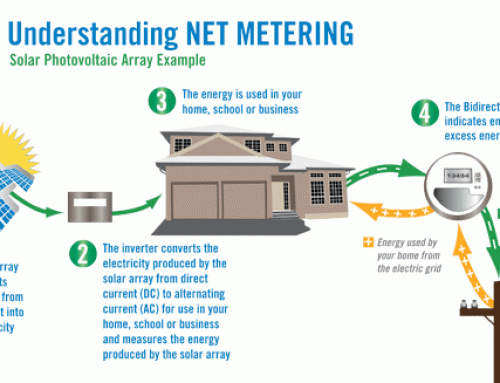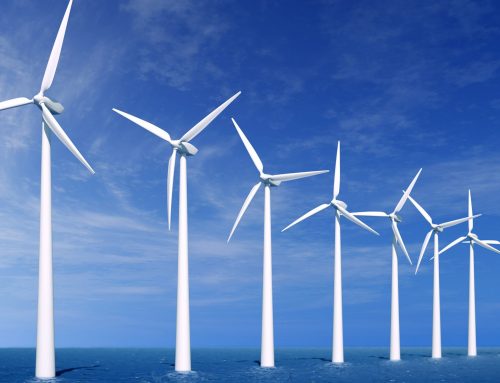Participation in the carbon crediting processes like Clean Development Mechanism (‘CDM’), voluntary carbon mechanisms as such is voluntary for a country. Pakistan has decided to participate in the mechanism based on its own assessment of potential benefits. Expected advantages coming along with participation in carbon crediting mechanisms in Pakistan may include:
- Introduction of advanced techniques, technologies and processes
- Training and introduction of new skills to local entities
- Influx of additional foreign investment
- Channeling of carbon revenues to investment priorities
- Concentration on cleaner and more sustainable development
- Reduction of greenhouse gas (‘GHG’) emissions and increase in environmental awareness.
Carbon crediting mechanisms aim at increasing the profitability of eligible alternative and Renewable Energy (‘ARE’) projects. These also incentivize local communities to self-manage qualifying projects and thus strengthening their livelihood, since its conceptualization is bases on sustainable development principles.
The Policy for Development of Renewable Energy for Power Generation, 2006 (‘RE Policy’) of Government of Pakistan (‘GoP’) encourages the project proponents to apply for earning carbon credits. At time when the RE Policy was announced, CDM was the potential carbon market option available for developing countries like Pakistan. Because of which the RE Policy captured this concept only. However, as the time passes, new market mechanisms got evolved and several lucrative options in the voluntary markets become available where option of selling carbon credits at lucrative prices could be explored. Owing to this, the Designated National Authority (‘DNA’) established at Ministry of Environment at that time and now shifted to Climate Change Division (‘CCD’), encouraged the project proponents to get benefit from these market options as well.
Clean Development Mechanism
The Clean Development Mechanism (CDM), is one among the three flexible Kyoto Protocol mechanisms facilitated implementation of Green House Gas (GHG) emission reductions in developing countries. Such GHG emissions are procured by the developed countries to meet their emission reduction targets under the Kyoto Protocol.
The concept of the CDM is sketched in Article 12 of the Kyoto protocol (UNFCCC 1997). The CDM was created to assist non- ANNEX I Parties in achieving sustainable development, transfer of sustainable technologies and contributing to the ultimate objective of the Climate Convention while enabling ratifying Annex I parties to use Certified Emission Reductions (CERs) from project activities in non- Annex I countries- including Pakistan- in order to contribute towards their compliance of national greenhouse gas emission reduction targets during the first commitment period (2008- 2012). Under the CDM, ratifying parties Annex I parties are allowed to implement projects that reduce emissions in non- Annex I Parties or absorb carbon through afforestation or reforestation activities. In return, ratifying Annex I parties receive CERs while the project activity assists the host country in their development process and climate change mitigation. As GHG abatement costs in developing countries are expected to be much lower than in industrialized countries the CDM gives the Annex I country the opportunity to achieve their abatement targets at lower costs while providing sustainable development projects with a mitigation potential to the host country.
The CDM was conceived in order to assist countries with a binding emission reduction target in achieving partial compliance with their country target by carrying out project activities aimed at reducing emissions in the developing countries like Pakistan that yet do not have such obligations.
The underlying idea of the mechanism is to take advantage of cost- efficient mitigation options everywhere in the world; in other words, to achieve the same environmental benefits at lower costs, with so- called least- cost abatement measures. The Protocol hence intends to support industrialized countries in reducing their costs of compliance.
In order to preserve a high probability of keeping global temperature increase below 2 degrees Centigrade, current climate science suggests that atmospheric CO2 concentrations need to peak below 450ppm. This requires global emissions to peak in this decade and decline to roughly 80% below 1990 levels by the year 2050. Such dramatic emissions reductions require a sharp move away from fossil fuel, significant improvements in energy efficiency and substantial reorganisation of our current economic system. This transition can only be achieved by far-reaching national and international climate policies.
Opportunities of Earning Carbon Credits in Alternative & Renewable Energy Projects in Pakistan
Carbon offsetting is an increasingly popular means of taking action. By paying someone else to reduce GHG emissions elsewhere, the purchaser of a carbon offset aims to compensate for – or “offset” – their own emissions. Individuals seek to offset their travel emissions and companies claim “climate neutrality” by buying large quantities of carbon offsets to “neutralize” their carbon footprint or that of their products.
Carbon offset markets exist both under compliance schemes and as voluntary programs. Compliance markets are created and regulated by mandatory regional, national, and international carbon reduction regimes, such as the Kyoto Protocol and the European Union’s Emissions Trading Scheme. Voluntary offset markets function outside of the compliance markets and enable companies and individuals to purchase carbon offsets on a voluntary basis
In Pakistan, alternative and renewable energy (ARE) projects have definite prospects for development as carbon offsetting initiatives. Being clean source of energy, the ARE projects are best suited for CDM and can earn CERs. The Government of Pakistan (GoP) has taken up a broad spectrum of initiatives for the development of AREs in the country and seeks projects to address the CDM pertaining to sustainable development and should apply to CDM Executive Board as per the guidelines of UNFCCC for get CERs and earn carbon revenues.
To accelerate and streamline activities related to the REs, the Government of Pakistan has authorized Alternative Energy Development Board (AEDB) to act as a focal body of the federal government with mandate of one window facility for ARE development in the country. The GoP approved Policy for Development of Renewable Energy for Power Generation, 2006, in which it specified constitution of Joint Management Committee (JMC) for sale and management of CERs earn through renewable energy projects. The JMC comprise of power purchaser, power producer and AEDB.
Status of Registration of Alternative and Renewable Energy Projects with CDM
CDM is one of the instruments that developers of the Alternative and Renewable Energy (ARE) Projects pursue and earn financial returns by getting their projects registered with CDM Executive Board and selling the accrued Certified Emission Reduction certificates in the international carbon market.
The sponsors of ARE projects in Pakistan also have been looking at this option. The details of the ARE projects who have started process for CDM registration are as follows:
- Wind Power
Till to date 7 wind power projects are in advanced stage of CDM registration process. 6 projects of 50 MW each have been registered with CDM Executive Board. Aggregate number of approved CERs from these projects is 529,115. Significant factor about these projects is that these are registered by the end of 2012 which allows them to sell their CERs in European Union market. One more project of 56.4 MW is in process of approving their registration (expects their crediting approved by 2012).
- Solar Power
M/s DACC Power Generation (Pvt.) Ltd. has got registered Program of Activities (PoA) for Solar Power Projects in Pakistan. The PoA was registered on 24/12/2012 has the life time from 01/08/2012 to 31/07/2040. First project of the PoA was registered on 24/12/2012 with approved CERs number 32,070 having crediting period between 24/12/2012-23/12/2012. The PoA allows upcoming solar power projects to get integrated with it and earn the benefits like prompt registration and inclusion in the list of projects registered by 2012. The sponsors of solar power projects are encouraged to start CDM process and are being offered to register their projects with solar PoA of DACC.
- Small / Mini / Micro Hydro
Agha Khan Rural Support Programme got registered their CDM project for community Based Renewable Energy Development in the Northern Areas and Chitral (NAC), Pakistan (103 Micro Hydro Turbine sites with 15 MW capacity). The approved number of CERs for the project are 76,017. The project was registered for crediting period between 01/01/08 – 21/12/13
- Biomass/Waste to Energy
08 projects have so far been registered with CDM Executive Board for various biomass / waste to energy applications which include generation of electricity from bagasse and biomass, composting of solid waste and replacing conventional fuel with biomass. A total of 553,825 CERs have been approved for these projects.
There are a number of ARE projects that are pursuing development of projects under CDM. They are at preliminary stages of completing procedural requirements in this regard.
In addition to CDM, the Government is also exploring opportunities of announcing Nationally Appropriate Mitigation Activities (NAMAs).
Checklist of Investors to initiate developing clean energy project
CDM screening methodology for ARE project developers
Step 1: Clarification of scale of the project activity
Step 2: Clarification of design of project activity
Step 3: Selection of UNFCCC Methodology
Step 4: Assessment of CERs potential
Step 5: Clarification of Crediting periods
Step 6: Clarification of potential for recovery of transaction costs
Step 7: Sustainability Check
Step 8: Additionality Check
Step 9: Management decision to go ahead or not
Step 10: If management decides for go ahead then issue Prior Consideration Note to Climate Change Division and onward communication to CDM-Executive Board
Carbon Offsetting Project Cycle
Note: List of DOEs is available at http://cdm.unfccc.int/DOE/list/index.html
Who is Who in a Carbon Offset Project
Several institutions are charged with the design of the mechanism, since the legal regulations of Kyoto Protocol and Climate Convention alone cannot define a complex carbon offsetting mechanisms. Each institution executes it functions at different steps of the project cycle.
Conferences of the Parties (CoP) to UNFCCC along with Meetings of the Parties (MoP) to the Kyoto Protocol have authority over the CDM and interpret its principles in their annual meetings. Entrusted with the selection and approval process, they make further decisions on rules, define details and formulate technical explanations, whereas the Executive Board is responsible for supervision of the CDM. CoPs/MoPs provide approval to the guidance of EB by deciding on:
- Recommendations made by the EB on its rules and procedures
- Recommendations made by the EB in accordance with provisions of decision 17/CP.7, annex and relevant decisions of the CoP/MoP
- The designation of Operational Entities accredited by the EB
CoPs and MoPs further review the regional and sub- regional distribution of DOEs, take decisions to promote accreditation of DOEs from developing countries, review the regional and sub- regional distribution of CDM projects with a view to identify systematic or systemic barriers to their equitable distribution and takes decisions, based on a report by EB.
CDM Executive Board is the supervisory body of the mechanism as set out in Article 12(4) of the Kyoto Protocol. EB develops the CDM rules and procedures. However, outcome of EB meetings should be regarded merely as guidance.
EB is mainly responsible for developing guidelines that provide project participants with necessary information for preparing project documents. These guidelines
- elaborate the CDM’s rules
- promote consistency, transparency and predictability
- ensure that reductions in emissions are real and measurable
- ensure that reductions are an accurate reflection of reality
- ensure applicability of baselines in different geographical regions and to different eligible project categories
- address additionality requirements
- Executive Board also gives specific guidance in the following areas:
- definition of project categories that show common methodological characteristics for baseline setting
- setting accurate baseline methodologies
- methodological tools to ensure that the most appropriate methodologies are selected
- standardization of methodologies to allow a reasonable estimation of what would have occurred in absence of the project activity
- determination of project boundaries
- consideration of national policies circumstances
- the scope of the baseline
EB further accredits DOEs- the entities who actually validate eligibility of and verify the emission reduction performance of CDM projects- reviews their validation, verification and certification reports, registers CDM projects and issues CERs. Once a DOE submits validation report to EB for registration, the latter registers the project against an administrative fee in case no objections arise within eight weeks.
Designated National Authorities (DNA)
According to CDM national eligibility criteria a developing country can function as location for CDM projects if it fulfils three requirements:
- System for estimation of anthropogenic emissions by sources and removals by sinks of all GHGs is established and GHG inventory is submitted to UNFCCC
- Government has ratified the Kyoto Protocol
- Government has designated a national authority (DNA) for the CDM
Pakistan has prepared its national GHG inventory by using IPCC-recommended methodologies and submitted it to UNFCCC as part of its National Communication on Climate Change. The 2nd GHG inventory was to cover the year 2008. Pakistan has further ratified the Kyoto Protocol in 2005, declared its Designated National Authority (DNA) and consequently became eligible to benefit from the CDM. Pakistan initially established DNA under Ministry of Environment in 2005 and however, due to 18th Amendment in the Constitution of Pakistan, the DNA was shifted to Climate Change Division in 2011. The DNA is designated to manage the CDM process in Pakistan in line with national sustainable development goals. The Pakistani DNA is guided by the Prime Minister’s Committee on Climate Change and consists of the National CDM Steering Committee, Technical Committees and the CDM Secretariat. A CDM facilitation office (CDM cell) was established and is directly attached to a CDM Secretariat. Director General (Climate Change) & DNA (Focal Person – Pakistan) of CCD issues letter of Host Country Approval, considering PDD together with evaluation matrix form along with a covering letter by requesting grant of host country approval, public consultation report and environmental impact assessment report, or if not required, letter of no objection/endorsement from the concerned authorities.
Third Party Auditors Validators and Verifiers
The CDM and many of the voluntary offset standards require a third-party auditor to validate and verify a project’s climate saving potential and achieved emission reductions. Under CDM the auditors are called Designated Operational Entities (DOEs). To minimize conflict of interest, the validating DOE cannot also conduct project verification.
After its submission and approval through DNA of Pakistan, PDDs are validated by the DOE. If the DOE considers the PDD to meet the requirements, it makes the validation report available on the UNFCCC website for public review and comments within 30 days. The DOE then submits the documents to the EB for registration. Monitored emission reduction will also be registered and later verified by the DOE. On the basis of its verification report, the entity finally certifies the amount of emission reductions achieved through the CDM project activity.
Strong institutional structures ought to provide stringent concepts to smoothly realize the three goals of the carbon offsetting mechanisms: local sustainable development of the host country, emission reduction to contribute to the overall objective of the Climate Convention and assistance to Annex- I countries in achieving their emission reduction targets in a cost- effective manner.
Designing, implementing and operating a carbon offset project requires the involvement of a large number of parties, stakeholders and authorities. The parties involved differ from project to project.
This is a legalized institutional arrangement established in pursuant to the Section 8.3.3. of the RE Policy comprising of power producers (Project Proponents), power purchasers (CPPA/NTDC) and AEDB to jointly manage and sell the CERs thus obtained in the international carbon market at an optimum price. The CPPA has allowed the Project proponents to hire requisite consultancy services for registering the projects with respective standards and engaging the purchasers of the carbon credits. The Project proponents are required to take the JMC members in loop while making transaction and take consent of CPPA (being beneficiary of carbon credits proceeds) in selling the carbon credits in the international carbon market.
Road to Host County Approval: Factsheet Pakistan
| STEP AT CDM PROJECT- CYCLE | RESPONSIBLEENTITY | FUNCTIONIN DETAIL | REMARKS | CONTACT PERSON | ||
| Methodologies and initial assessment | Project Proponent | Project development | Relevant methodologies can be downloaded from www.unfccc.int | |||
| Project Idea Note | Project Proponent | Marketing document | Irfan YousufCDM Director (CDM)
AEDB |
|||
| Project Design Documents as technical document | Project Proponent | Project Proponent together with consultantfills CDM methodology of the UNFCCC | List of CDM consultants is available at www.aedb.org | Irfan YousufCDM Director (CDM)
AEDB |
||
| EIA/IEE | EPA | Environmental Approvals prior to Host county Approval | Each province has its own Environmental Protection Departments responsible for issuing approvals for EIA/IEE | Director Generals of respective provincial Environmental Protection Departments. | ||
| Host County Approval | DNA | Issuance of letter of Host County Approval | Mr. M. Irfan TariqDG (CC) & DNA, Climate Change Division | |||
| Consent / Approval for Carbon Credits selling and managing | JMC | Sale carbon credits and revenues earned and manages the proceeds as per RE Policy. | Mr. Javed Naseeb Malik, Chief Engineer-II (Procurement), CPPA, Mr. Asjad Imtiaz Ali, CEO, AEDBIrfan Yousuf
CDM Director (CDM) AEDB |
|||





Leave A Comment